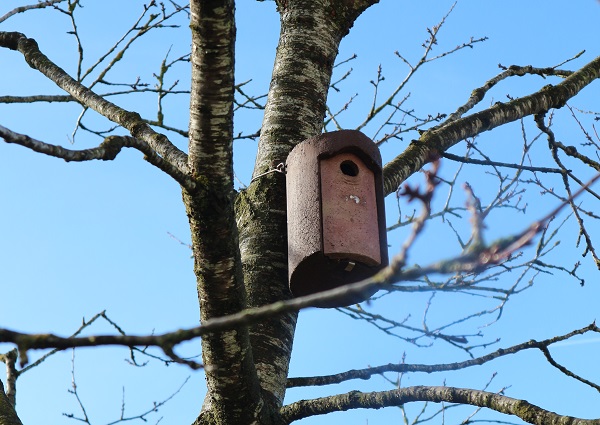 Credit: natur&ëmwelt
Credit: natur&ëmwelt
In the latest in a series of articles about current conservation issues, experts at natur&ëmwelt, a leading nature conservation NGO in Luxembourg, spoke to Chronicle.lu about the importance of nest boxes for birds and the rules to follow when providing them with shelter.
Natur&ëmwelt volunteer, the late David Crowther, helped collect the relevant information from the NGO for this article.
Chronicle.lu: The construction, maintenance and sale of nest boxes seems to be quite a big thing for natur&ëmwelt. How so? Have birds forgotten how to build their own nests?
Natur&ëmwelt: You’re right, it is quite a big thing. Nest boxes are easy and fun to build, especially for children. And seeing how they’re used is very satisfying and educational. And no, we’re not mollycoddling the birds. They still have to build their own nests; it’s just a matter of giving them somewhere to do so.
Chronicle.lu: What did birds do before we started supplying them with customised accommodation?
Natur&ëmwelt: They had facilities which are in short supply in our modern world, i.e. natural cavities and nest holes in trees and buildings. Nowadays, there are fewer natural cavities because there are fewer trees, especially ones that live to a ripe old age and automatically develop nooks, crannies and cavities.
Chronicle.lu: Can all birds nest in nest boxes?
Natur&ëmwelt: Only the ones that are “cavity nesters” and then only if the box is the right size and the entrance hole big or small enough. Most birds build their nests out in the open - in trees or bushes, or in ground-level vegetation.
Chronicle.lu: Can we help those species too?
Natur&ëmwelt: On a small scale, yes, by providing trees and bushes and by not being too particular about clearing away the undergrowth. As we’ve pointed out many times during this series, though, gardens are just mimicking on a small but important scale the kind of conditions that used to be the absolute norm in the farmed countryside.
Chronicle.lu: What is an example of this?
Natur&ëmwelt: The whinchat, which used to be a common enough breeding bird of damp meadows and field margins. It’s now extinct as a breeding species in Luxembourg, precisely because its breeding habitat has largely disappeared. Fields have been drained, and chemical pesticides and herbicides have done the rest.
Chronicle.lu: Back to nest boxes… Do they come in all shapes and sizes?
Natur&ëmwelt: Indeed. Most of us are aware only of the standard ones that suit small birds like great tits and blue tits. But bigger birds need bigger boxes. A starling box, for example, is a good size bigger; and if you’re really lucky, it might be of interest to, say, a wryneck too. And then there are the really big items which are normally located in or on the facades of buildings like farm sheds and churches - tailor-made for owls and kestrels.
Chronicle.lu: Assuming one is starting with a standard tit box, are there any rules on how and where to position it?
Natur&ëmwelt: Generally speaking, at least at head height above the ground. The entrance hole should not face directly into the sun or rain. And, most importantly of all, the box should be made of a natural or breathable material, like wood or “woodcrete”. Plastic is an absolute no go.
Chronicle.lu: Does it require any maintenance?
Natur&ëmwelt: Just an annual spring- or autumn-clean is all that’s needed - mainly to rid the used nest material of parasites which might attack the incubating adult bird or her nestlings. Just open up the box, sweep out the old stuff and leave the box clear for the next occupants. By doing so, you’ll be helping to strengthen the birds’ pair bond. As we all know, there’s nothing like setting up home together to help build a strong and sustainable relationship...








